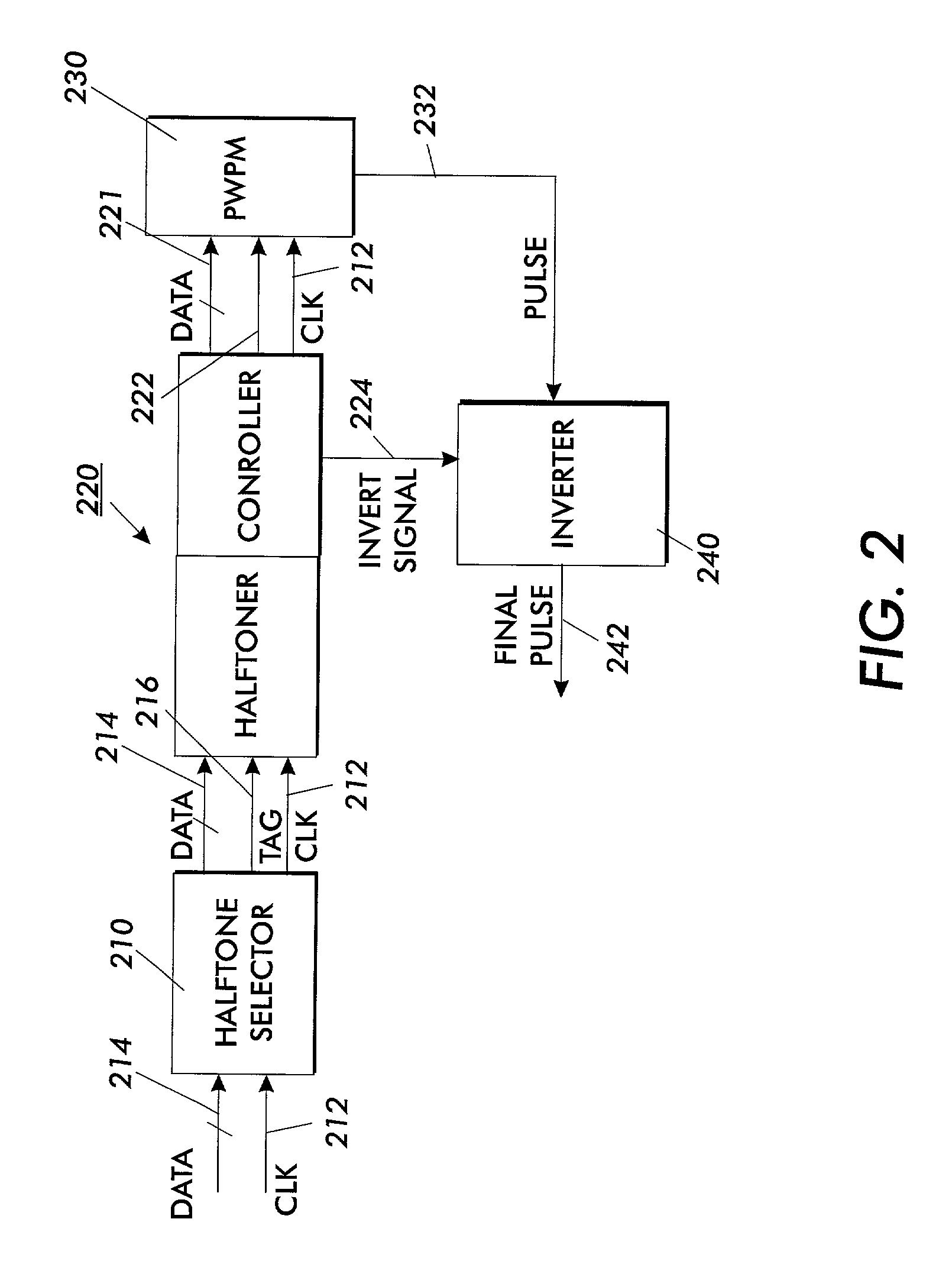Apparatus and method for halftone hybrid screen generation
a technology of hybrid screen and apparatus, applied in the field of apparatus and method for halftone hybrid screen generation, can solve the problems of dithering algorithms, many printing devices are not capable of reproducing gray scale images, and the optimal display of continuous images in binary form remains unsettled, so as to achieve maximum picture detail, maximum picture contrast, highlight, shadow and color fidelity
- Summary
- Abstract
- Description
- Claims
- Application Information
AI Technical Summary
Benefits of technology
Problems solved by technology
Method used
Image
Examples
Embodiment Construction
[0023] For a general understanding of the present invention, reference is made to the drawings. In the drawings, like reference numerals have been used throughout to designate identical elements. FIG. 1 shows a raster output scanner (ROS) which may be used to print video signals produced by a source (not shown). There are two common types of ROS 18, flying spot and pulse imaging ROSs. In both, a laser beam 20, emitted from laser 22, passes into conditioning optics 24 which includes a modulator 25. For precise periods of time, determined in response to video signals supplied to ROS 18, modulator 25 either blocks or deflects the laser beam, or allows to the beam to pass through the conditioning optics to illuminate a facet 26 of rotating polygon 28. Laser 22 may be a helium-neon laser or a laser diode. In the latter case, the video data would directly modulate the laser rather than modulator 25. In addition, more than a single laser source 22 or beam 20 could be employed to practice t...
PUM
 Login to View More
Login to View More Abstract
Description
Claims
Application Information
 Login to View More
Login to View More - R&D
- Intellectual Property
- Life Sciences
- Materials
- Tech Scout
- Unparalleled Data Quality
- Higher Quality Content
- 60% Fewer Hallucinations
Browse by: Latest US Patents, China's latest patents, Technical Efficacy Thesaurus, Application Domain, Technology Topic, Popular Technical Reports.
© 2025 PatSnap. All rights reserved.Legal|Privacy policy|Modern Slavery Act Transparency Statement|Sitemap|About US| Contact US: help@patsnap.com



